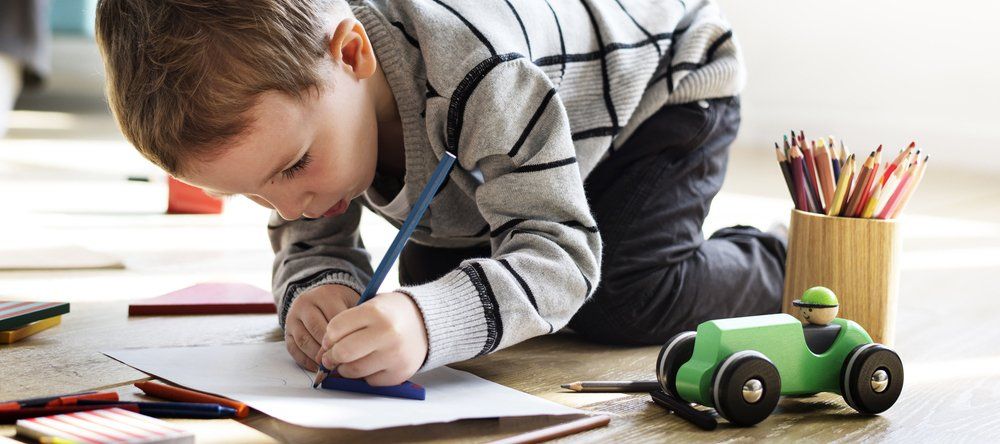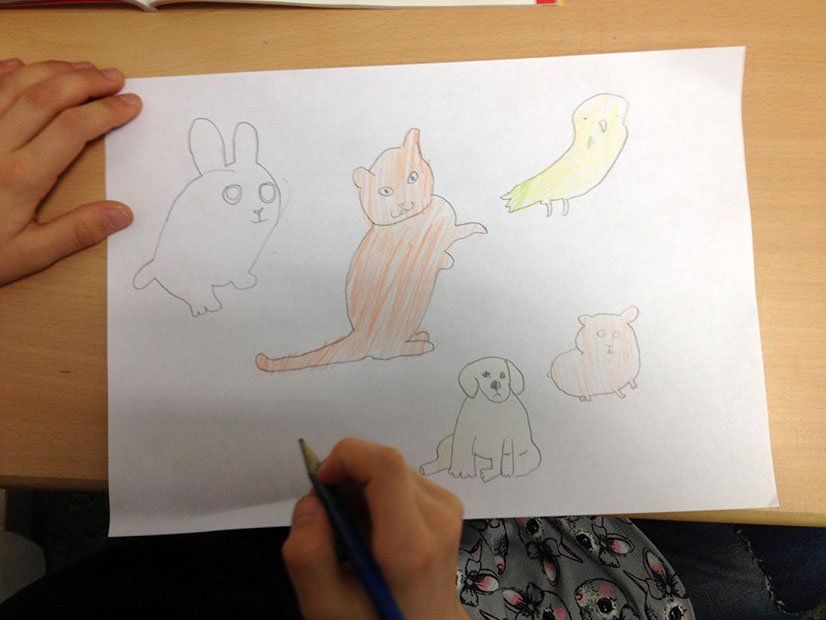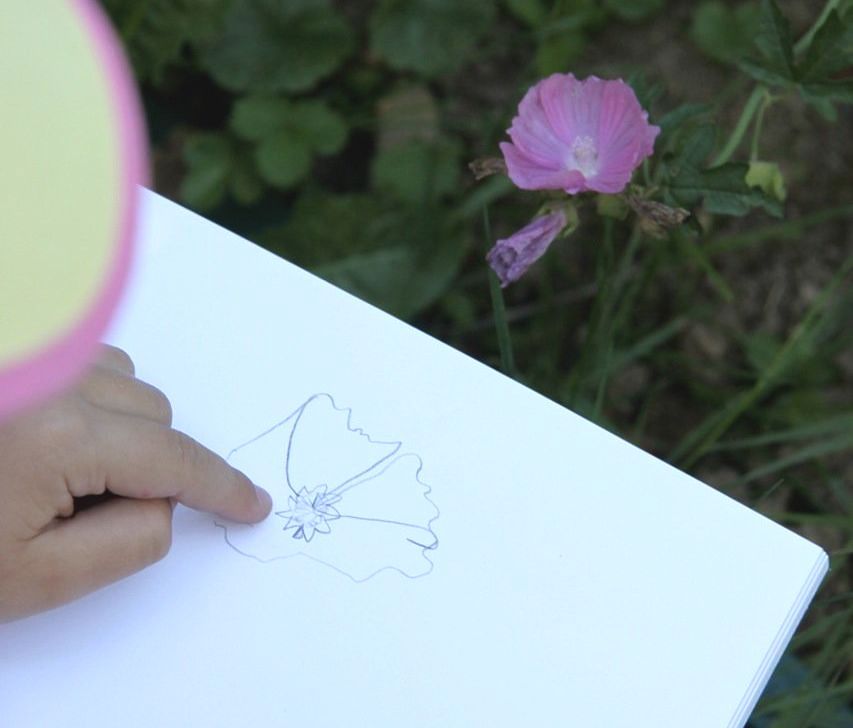Zen drawing with children
September 22, 2022

When my daughter turned seven, I noticed that her interest in drawing increased, so I decided to find out what blind contour drawing could do for children of her age. I asked for permission to teach the method to her class mates at school and one day about 30 children, boys and girls, aged 6, 7 and 8 joined my class on one condition: that they would try to draw in silence.
I divided them into small groups, gave them magazines with lot's of animal photos and allowed them to pick whatever they wanted to draw. Then I had them draw in silence for about 1 hour.
Before I continue it may be interesting to tell a bit about children and drawing. As Betty Edwards explains in her book 'Drawing on the Right Side of the Brain' children go to stages in the development of drawing skills. Children use drawing to get a better understanding of the world around them, to understand symbols, to tell stories and work out problems. The older they get, the more they strive for creating realistic drawings, adding more details, drawing in perspective, creating 3d illusions and adding shadows and light. We probably all remember our struggles with drawing exactly what we see during this stage.
The stages show that most children go through a similar development and move from more basic drawings consisting of symbolic shapes like circles and cubes to realistic complex drawings. I also conclude that they move from drawing mostly their inner (fantasy) world to becoming more aware of the actual world around them. It is a common sight: a young child that is totally focused on his or her paper while drawing. Just like in the photo above, with their face as close as possible to the paper and sometimes their tongue sticking out. The creation on paper is all that seems to exist. In order to create a realistic drawing the focus needs to shift more to the external world.
I have a wonderful book by Gregg M. Furth 'The Secret World of Drawings' that shows that children's drawings also show many symbolic information that reflects unconscious thoughts and emotions. All in all I think drawing is an extremely important skill for children to learn and understand the world and to express themselves. For us, their drawings are very important to get a glimpse of what is happening in their inner world. It's a shame that drawing is not seriously offered in many primary schools anymore (at least here in the Netherlands). That's why I took my chance to educate my daughters class mates.
The children in the class were mostly 6-8 year old and were probably moving from 'the landscape stage' into the 'stage of complexity'. Their drawings were becoming already more detailed and a bit in cartoon style. Betty Edwards speaks in this stage of (culturally based) differences by sex, with girls drawing things like butterflies and flowers and boys cars, airplanes and boats. Since the children weren't used to getting any drawing instructions in school, I did see this in my class too.
Of course they were quite excited about being together in a different class room with a parent as a teacher. My first challenge was to bring the energy down a bit without loosing their enthusiasm. I wanted to teach them the basics of blind contour drawing and see if this had any effect on their type of drawing. So I first let them draw freely whatever they wanted before introducing the exercise.

I had brought magazines that had lot's of cute animal photo's of mainly pets. Almost all kids loved animals and they found something in the magazine they loved to draw. Two of the boys that preferred cars and vehicles were not in the mood for drawing animals and I let them draw whatever they preferred.
The most important thing I wanted to teach them was the blind contour drawing exercise, so they could develop their drawing reflex. This way they experience that it's also also possible to draw without looking at their paper. They can focus on the object and learn new things from what they see. The fun thing about children is that they have an open mind and followed up the instruction with ease. By drawing the outlines of their beloved animals they were able to create a different kind of drawing then they were used to.
To demonstrate the difference in more detail: the giraf drawing on the left (below) was drawn by my daughter and shows her 'typical' way of drawing a giraf by memory. All giraf contours on the right are drawn by her after explaining blind contour drawing based on looking at a photo. As you can see something important happens in the drawing due to this practice:
the shape of the giraf face becomes far more realistic and the bumps (or ossicones) of the giraf appear on the drawing. The eye shows more detail (eye lid and lashes are added) and the hairs on the neck are added in the last contour drawing. As you can see, spots on the giraf all have the same size and shape in the first drawing and start on the neck. With the help of blind contour drawing the spots show more natural variation in size and appear on the face where girafs actually show spots. And also a funny detail: the ear moved further away from the ossicones and became much smaller just like in reality.
After this class of 1 hour, both the children and their teacher were impressed by the results. I was more than happy to see that children of this age are open minded and focust enough to draw with the help of the reflex. This simple drawing method can change the way we teach children (and adults!) how to draw in the future and help them to learn from observation and connect with the world around them. I hope that parents and teachers will teach this method to children and take the time to draw together in this way.
Hopefully the false assumption that you need to be talented to be able to draw will disappear!








